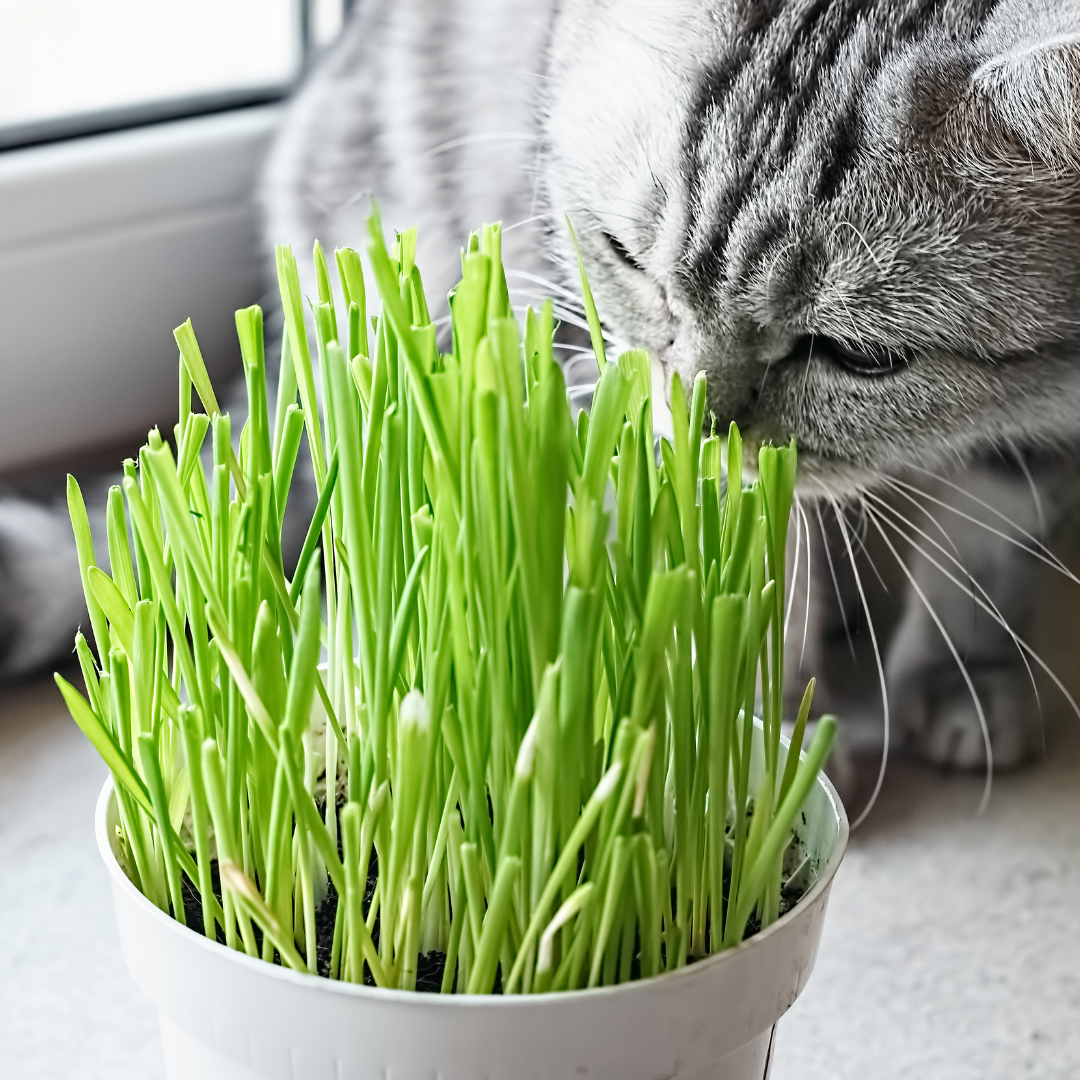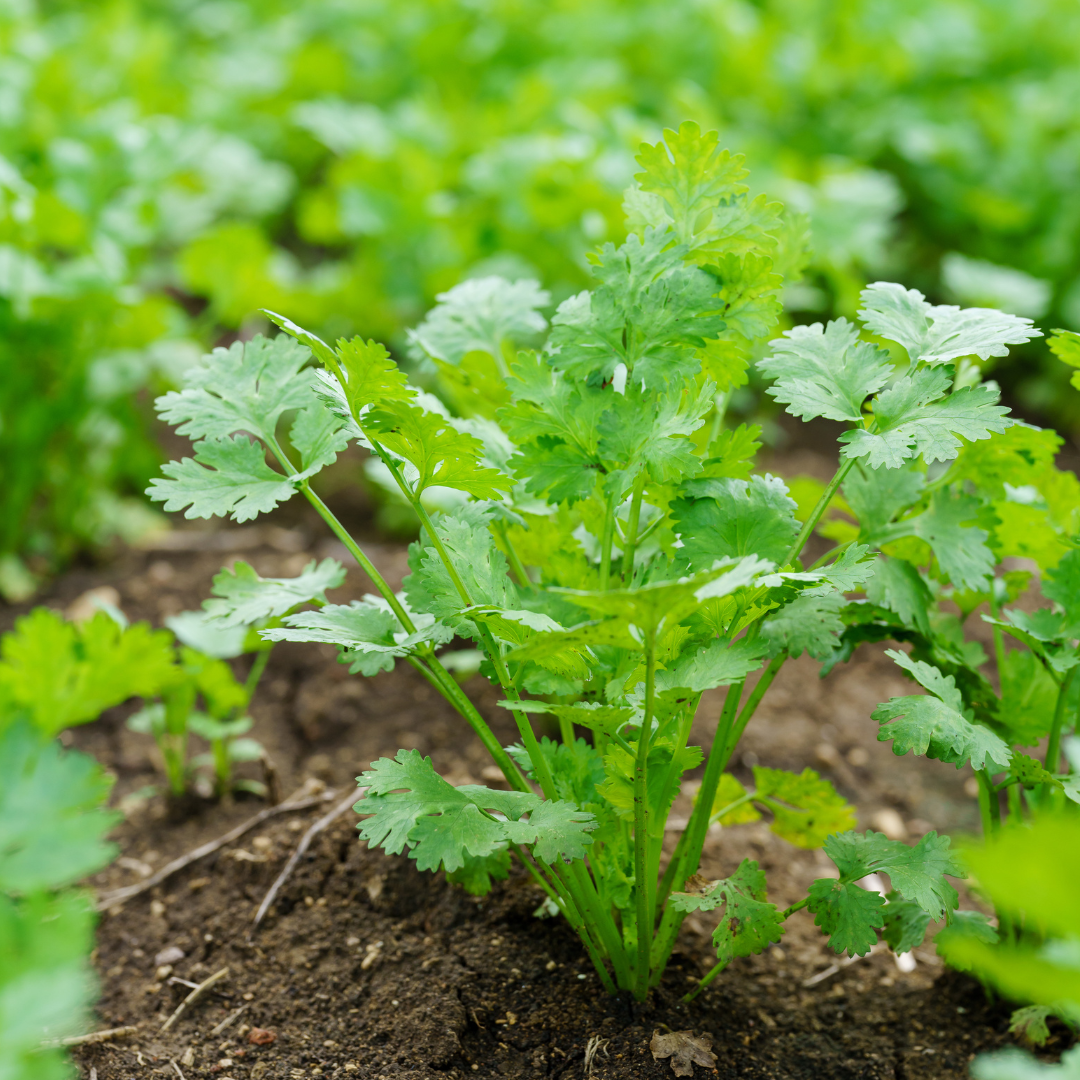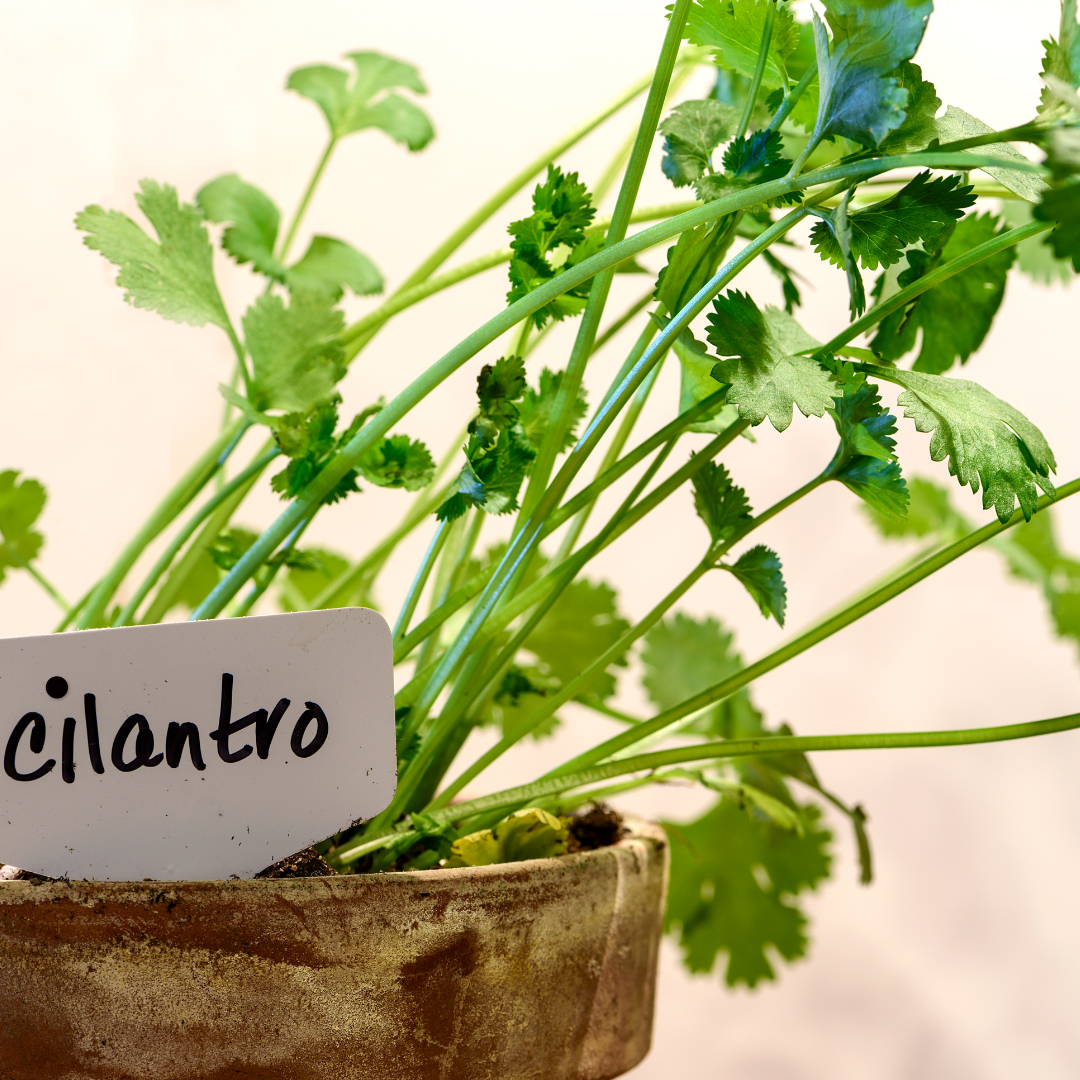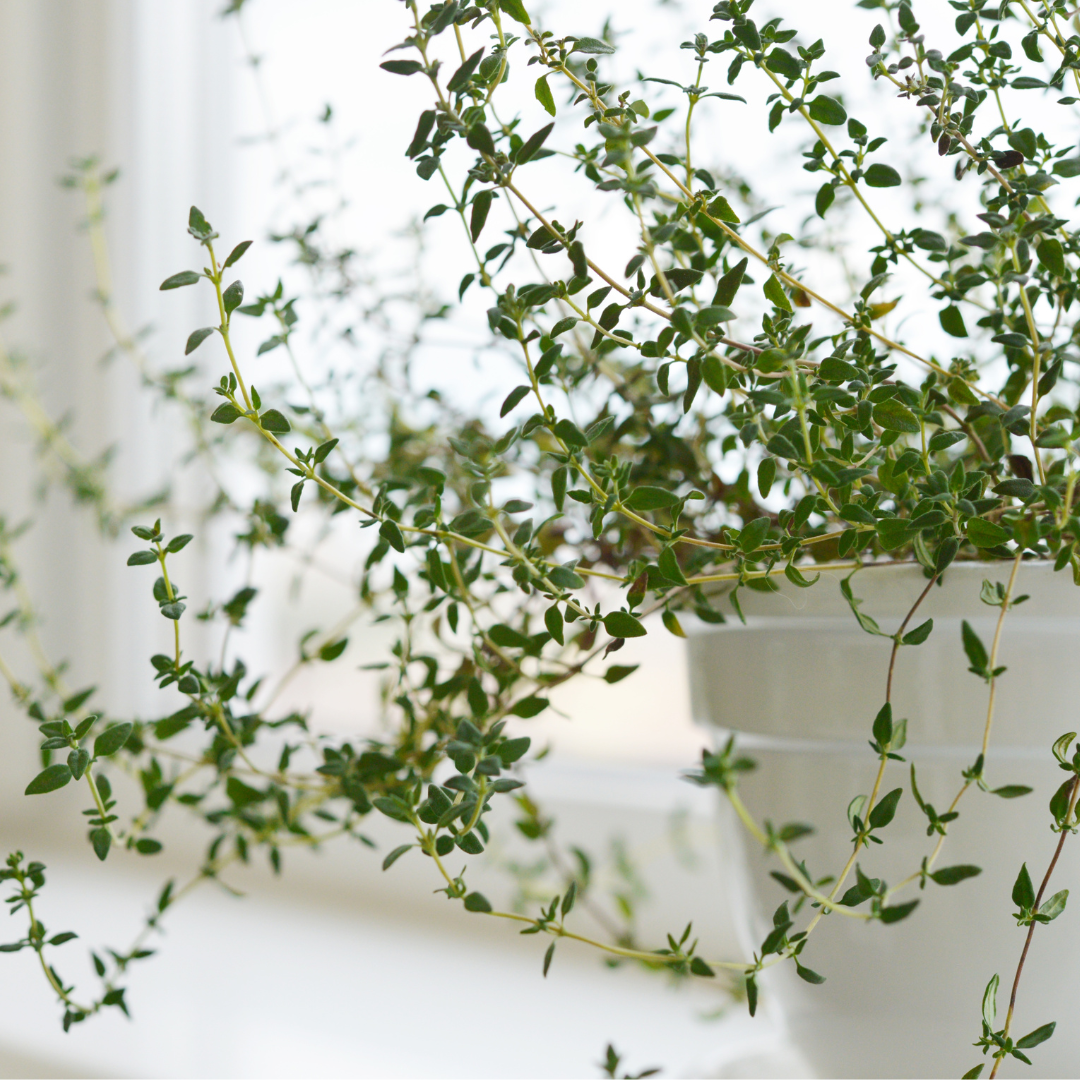Cats love to chew on grass, and many pet owners grow cat grass for their furry friends to nibble on. Not only is cat grass a tasty treat for your feline companion, but it can also aid in digestion and help with hairball control. In this guide, we will go over everything you need to know about how to grow cat grass, from the different types of grasses to choose from to the step-by-step process of growing and caring for cat grass. Knowing how to grow cat grass will make your fur babies happy!
Why Do Cats Love Grass?
Before we dive into the process of growing cat grass, let's first explore why cats enjoy chewing on grass. There are a few different reasons why cats are drawn to grass:
- Digestion: Cats are obligate carnivores, which means that their natural diet consists mainly of meat. However, they also require a small amount of plant matter in their diet to aid in digestion. Eating grass can help cats to digest their food better.
- Hairball control: When cats groom themselves, they ingest a lot of hair, which can lead to hairballs. Eating grass can help to move the hair through the digestive system, reducing the likelihood of hairballs.
- Enrichment: Chewing on grass can be a form of mental and physical stimulation for cats, especially for indoor cats who may not have access to outdoor plants.
Types of Grasses to Grow for Cats
There are several different types of grasses that you can grow for your cat. Here are some of the most popular options:
- Oat grass: Oat grass is a type of cereal grass that is easy to grow and popular with cats. It has a mild, sweet flavor that most cats enjoy.
- Wheat grass: Wheat grass is another cereal grass that is easy to grow and popular with cats. It has a slightly stronger flavor than oat grass.
- Barley grass: Barley grass is another cereal grass that is popular with cats. It has a slightly nutty flavor.
- Ryegrass: Ryegrass is a type of grass that is often used in lawns, but it can also be grown for cats to enjoy. It has a mild flavor that most cats like.
How to Grow Cat Grass
Now that you know about the different types of grasses to choose from, let's dive into the step-by-step process of growing cat grass.
Materials You Will Need
- Cat grass seeds: You can purchase cat grass seeds online or at a pet store.
- Organic potting soil: Choose a high-quality organic potting soil for best results.
- Planting container: You can use any type of container that is at least 2-3 inches deep.
- Plastic wrap: This will help to keep the soil moist during the germination process.
- Watering can or spray bottle: You will need to water the grass regularly.
- Scissors: You will need to trim the grass as it grows.
Herb Seed Assortment | 15 Variety Pack
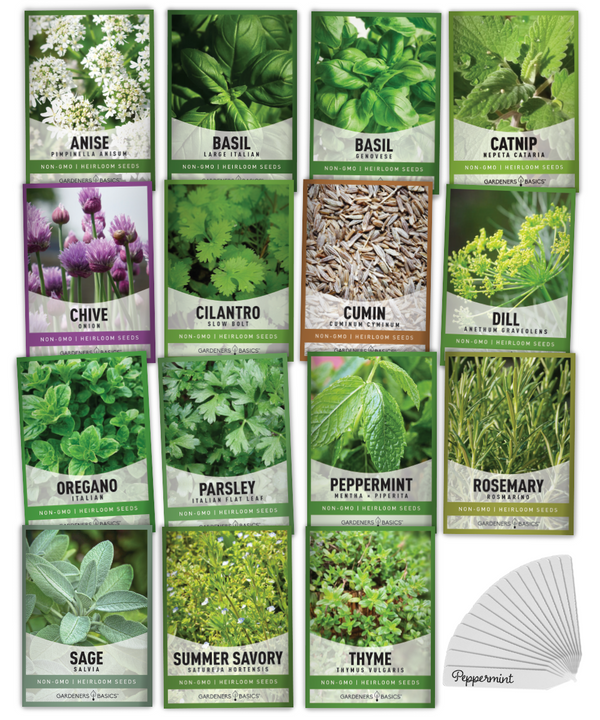
$19.95
Unlock the Power of Homegrown Herbs: 15 Heirloom Herb Seeds for Sustainable Gardening Introducing our 15 Herb Seeds Variety Pack—the ultimate collection for any home gardener, herbalist, or culinary enthusiast looking to grow fresh, flavorful herbs. Each of the 15 herb… read more
Steps to Follow
- Fill your planting container with organic potting soil, leaving about half an inch of space at the top.
- Sprinkle the cat grass seeds over the soil in a thin layer. You don't need to bury the seeds; just press them lightly into the soil.
- Lightly water the soil, being careful not to wash away the seeds.
- Cover the container with plastic wrap to help keep the soil moist during the germination process.
- Place the container in a warm, sunny location with good air circulation.
- Water the soil regularly, keeping it moist but not waterlogged.
- After a few days, you should start to see the grass sprouting. Remove the plastic wrap once the grass has started to grow.
- Continue to water the grass regularly, making sure to keep the soil moist but not waterlogged.
- As the grass grows, use scissors to trim it to a length that is comfortable for your cat to eat. This will also encourage the grass to grow thicker.
- Once the grass is several inches tall, you can remove it from the container and give it to your cat to enjoy. Alternatively, you can place the container in an area where your cat can access it and allow your cat to graze on the grass as desired.
Tips for Growing Cat Grass
Here are some additional tips to help you grow healthy and tasty cat grass:
- Choose a high-quality organic potting soil that is free from pesticides and other harmful chemicals.
- Water the grass regularly, but be careful not to overwater it. Cat grass likes to be kept moist but not waterlogged.
- Place the container in a warm, sunny location with good air circulation to encourage healthy growth.
- If you have indoor cats, consider growing cat grass near your other indoor plants to help improve air quality in your home.
- To make sure your cat grass stays fresh and tasty, only grow small batches at a time and replace it every few weeks.
- If your cat is a picky eater, try growing a few different types of grass to see which one they prefer.
Conclusion
Growing cat grass is an easy and rewarding way to provide your feline friend with a healthy and tasty treat. By following the steps outlined in this guide and using high-quality materials, you can grow delicious and nutritious grass that your cat will love. Whether you choose oat grass, wheat grass, barley grass, or ryegrass, your cat is sure to enjoy this enriching and tasty addition to their diet.
Popular Herb Seeds for Planting | 35 Variety Pack
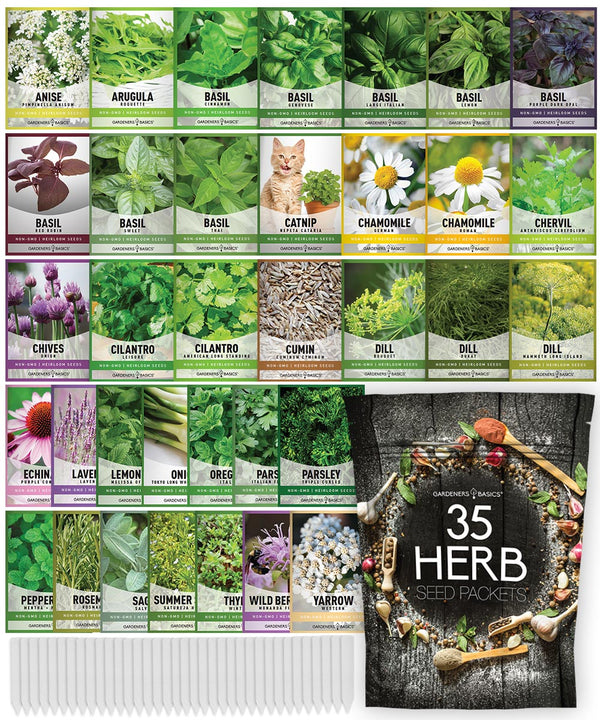
$29.95
$49.95
Heirloom, non-GMO herb seeds for indoor and outdoor home gardens! Introducing our 35 Herb Seeds Variety Pack, the ultimate selection for any herb garden enthusiast! This premium assortment includes heirloom herb seeds that are non-hybrid, open-pollinated, and non-GMO, ensuring you get only… read more
FAQ
1. Can I grow cat grass outdoors?
Yes, you can grow cat grass outdoors, but keep in mind that outdoor plants may be exposed to pests and other environmental factors that can affect their growth. Additionally, outdoor cat grass may contain harmful chemicals or pesticides. It's best to grow cat grass indoors where you can control the growing conditions.
2. Where can I buy cat grass seeds?
You can purchase cat grass seeds online or at a pet store. Look for seeds that are specifically labeled as cat grass seeds.
3. How often should I water my cat grass?
Cat grass likes to be kept moist but not waterlogged. Water the soil regularly, but be careful not to overwater it. The frequency of watering will depend on the growing conditions and the size of your container, but aim to water the grass every few days.
4. How long does it take for cat grass to grow?
Cat grass typically takes 7-14 days to germinate and start growing. Once the grass is several inches tall, you can remove it from the container and give it to your cat to enjoy.
5. Can I reuse the soil after the cat grass has been harvested?
Yes, you can reuse the soil, but it's best to refresh it with new soil and compost before planting a new batch of cat grass. This will ensure that the soil has enough nutrients to support healthy growth.
6. Can other pets eat cat grass?
Yes, other pets such as dogs and rabbits may also enjoy cat grass as a treat. However, keep in mind that some types of grass may not be suitable for all pets. Always supervise your pets when they are eating cat grass and consult with a veterinarian if you have any concerns.
7. Can I feed my cat too much cat grass?
While cat grass is safe for cats to eat, it should be given in moderation. Too much cat grass can cause digestive upset or diarrhea in some cats. It's best to offer cat grass as a treat and not as a substitute for your cat's regular diet.
8. Can I grow cat grass in a hydroponic system?
Yes, cat grass can be grown in a hydroponic system, but keep in mind that the growing conditions may be different than traditional soil-based growing. Make sure to follow the instructions for your specific hydroponic system and choose cat grass seeds that are suitable for hydroponic growing.
9. How do I know if my cat is eating too much cat grass?
If your cat is eating too much cat grass, they may experience digestive upset or diarrhea. Additionally, if your cat starts to vomit or show signs of discomfort after eating cat grass, stop offering it and consult with a veterinarian.
10. How do I store cat grass?
To store cat grass, you can either leave it in the container or transfer it to a small vase or jar filled with water. Keep the container or vase in a cool, well-lit area, but out of direct sunlight. Replace the water every few days to prevent bacteria from growing.
11. Can I use regular soil instead of organic potting soil?
While you can use regular soil to grow cat grass, it's best to use a high-quality organic potting soil. Organic potting soil is free from harmful chemicals and provides the necessary nutrients to support healthy growth.
12. How do I prevent mold from growing on my cat grass?
To prevent mold from growing on your cat grass, make sure to keep the soil moist but not waterlogged. Allow the soil to dry out slightly between watering. Additionally, make sure to provide good air circulation around the plant to prevent moisture buildup.
13. Can I grow cat grass in a decorative container?
Yes, you can grow cat grass in a decorative container as long as it has drainage holes at the bottom. Make sure to choose a container that is at least 2-3 inches deep to provide enough room for the roots to grow.
14. How often should I replace the cat grass?
To ensure that the cat grass stays fresh and tasty, it's best to replace it every few weeks. This will also prevent mold or bacteria from growing on the soil. Alternatively, you can grow small batches of cat grass every few weeks to provide a continuous supply for your cat to enjoy.
Herb Seed Assortment | 15 Variety Pack

$19.95
Unlock the Power of Homegrown Herbs: 15 Heirloom Herb Seeds for Sustainable Gardening Introducing our 15 Herb Seeds Variety Pack—the ultimate collection for any home gardener, herbalist, or culinary enthusiast looking to grow fresh, flavorful herbs. Each of the 15 herb… read more



